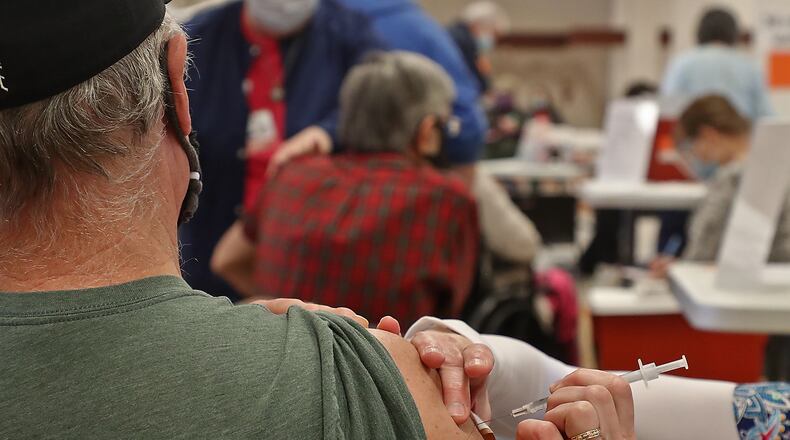Ohio recorded 1,769 COVID-19 cases in the last day, according to the Ohio Department of Health. It is the highest number of daily cases the state’s recorded in the last three weeks and the sixth time more than a thousand cases have been reported in the last eight days.
In the last 21 days, Ohio is averaging 855 cases a day, according to ODH. In the last seven days, Ohio is averaging 1,262 cases a day.
Just under half of Ohioans, including more than 80% of those 65 and older, are vaccinated against COVID-19. Nearly 42% of Clark County residents have completed their vaccine series, amounting to more than 56,000 people, and Champaign County reports a vaccination completion rate of 34.7% (13,501 people). About 44.6 % of Clark County residents have started the vaccine series while about 37.4% of residents in Champaign County have had a least one dose.
Clark County Combined Health District commissioner Charles Patterson stated in a community update on Friday that nationally, roughly 95% of hospitalizations related to COVID-19 are among unvaccinated individuals.
“Although the vaccines are not perfect, they have certainly seemed to have helped slow the virus down, and they certainly keep people out of the hospital for the most part,” he said.
However, because the delta variant is far more contagious than the prior strain of COVID, vaccinated people are at risk of contracting it, and these vaccinated individuals are also at risk of spreading the virus to others, Patterson said.
Ohio hospitals employ about 251,000 and on Tuesday, the Ohio Hospital Association recommended the organizations independent adopt policies requiring workers get COVID-19 vaccines.
This doesn’t mean all hospitals will adopt a vaccine requirement, and the association recommended local factors determine whether, how and when such policies are implemented.
The Dayton VA Medical Center is already requiring frontline workers to get vaccinated in the coming weeks, because of a mandate through the Veterans Administration.
Mike Abrams, president of the hospital group, said the COVID-19 delta variant is a game changer in the fight to overcome this pandemic.
“Low vaccination rates across Ohio and the country endangers not only the unvaccinated, which includes children under 12 years old and individuals who are immunocompromised, but invites continued mutations of even more dangerous strains of the virus to develop, putting the health of our communities at serious risk,” he said in a statement.
He stated that hospital workers getting vaccinated against COVID-19 helps “ensure the long-term ability of the health care system to respond to the pandemic and the continuation of vital health care services.”
Vaccination rates are uneven around the state.
Ohio nursing homes reported anywhere from nearly 1% to nearly 100% of staff as vaccinated. Local counties reported rates ranging from 54% to 32% of residents with at least one dose.
About 1 in 4 Ohioans covered by Medicaid are vaccinated which is about half the rate of the general population.
The Dayton Daily News previously reported that Ohio Medicaid members were more likely to say they were masking and social distancing during the pandemic and the low vaccination rate stems from a range of access and information barriers.
CareSource and the other insurers who manage Medicaid policies are offering $100 gift cards, up from originally offering $50 gift cards, as well as other incentives to encourage more immunization. They are also working with pharmacists to give vaccine information and on demand vaccination.
“We have found that is probably where we’re going to have the biggest opportunity for the largest number to get vaccinated,” said Dr. Dale Block, CareSource’s chief medical officer for Ohio.


